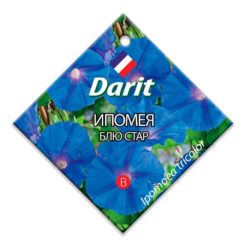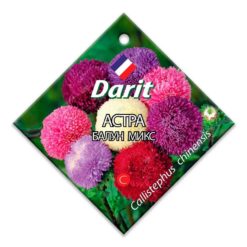Carrot Bangor F1, Caprice seeds 20pcs, 0.5g each
$27.0
Carrot Bangor F1, Caprice seeds 20pcs, 0.5g each
250 in stock
Carrot “Bangor F1” is a hybrid variety included in the State Register of the Russian Federation for the Central Region. The variety is valued for its early ripeness, uniformity of root crops, the harvest is suitable for long-term storage, while the carrots retain good taste. Carrots are considered to be early ripe from germination to technical ripeness of 100-110 days, yield 1.9-2.7 kg / m2. The rosette of the leaves is semi-vertical, the leaves are of medium length, green, and moderately dissected. The bark and pith are orange, roots with a smooth surface, narrowly elongated with a blunt tip, the head is slightly depressed. Weight 125-208 g, length 14-16, diameter 3-5 cm. The pulp is juicy, tasty (total sugar content 5.9%). Carrots are suitable for fresh consumption, for all types of processing and in the preparation of juices (amount of dry matter 10.5%), carotene 10.2 mg per 100 g of raw matter. Seeds are planted in the garden in late April – early May. Soil temperature at the time of sowing should not be less than + 5 + 8 ° С. On the prepared bed, grooves are made with a depth of 2-3 cm, the distance between the rows is 15 cm. The bottom of the groove is watered with warm water and rolled. Then, the seeds are evenly sown to a depth of 1 cm. They are sprayed with water, after the furrow they are covered with earth, slightly compacting, this will help the seeds better contact with soil and moisture. The germination rate of the variety is 86%. After planting the seeds, the soil is mulched with dry peat or sawdust, with a layer of 1 cm. Instead of peat, you can cover the bed with a transparent film, in 1 layer, or with lutrasil (or any covering material). A space of 5-6 cm is left between the bed and the film. If you cover with lutrasil, then you can water the bed on top of this material. The shoots will be smoother, and the soil will not form a crust. After germination, the material is removed. It is necessary to thin out Bangor F1 carrots in a timely manner in order to create an optimal feeding area for the plants. This is usually done in several stages. The first formation is done when the first paired leaves are formed. The distance between shoots should be 2-3 cm. Only weak plants are removed. The second time the carrots are thinned when the roots reach 1 cm, the distance between them is 4-5 cm. The third time, the thinning is carried out as needed, the distance between the roots is 5-7 cm. It is imperative to sprinkle the resulting holes from the torn plants with earth. Water the carrot bed evenly throughout the growing season. Considering the rainfall and weather conditions in your region. It is best to irrigate in the evening and only with warm, settled water. Young carrots are watered at the rate of half a bucket per square meter of the garden. Adult plants – 1 time in 8-10 days at the rate of 6-8 liters / m2. For those who visit their garden plots, it is important to remember. If the weather was dry and hot. And upon arrival you will make abundant watering, then the roots may crack, such carrots will lose their ability to be stored for a long time. In this case, watering should be resumed from 2-4 liters / m2, after 1-2 days, watering is increased by 5-8 liters / m2. It is necessary to pour water onto the beds gradually so that the soil can be saturated with moisture by 12-15 cm. Before harvesting for 2 weeks, watering is carried out with abundant 2 buckets per 1 m2. Be sure to consider any rainfall before any watering. Optionally, you can feed the carrots. The main thing is to take into account all the fertilizers applied to this bed. And of course the condition of the plants. At the first feeding, nitrogen fertilizers are applied, 10-15 g of urea per 1m2, in the second feeding, potash and phosphorus fertilizers are applied 20-30 g of superphosphate per 1m2, 10-15 g, potassium salt per 1m2. If there is not so much space in your garden and you have to plant carrots in the same bed, then in such a situation you can add wood ash. Twice a year 0.2 kg / m2. Manure fertilizers are not suitable for growing carrots, since they are not very beautiful and poorly stored root crops. When the plant is underdeveloped, bird droppings (1: 10 or 1: 15) are suitable to enhance growth. It is advisable to insist the fertilizer for several days in a warm place. Before watering, the fertilizer is diluted again, 1 liter of fertilizer per 10 liters of warm water. After watering, the soil is loosened, the watering site is covered with soil. For storing the variety “Bangor F1”, the root crops are taken whole, without cracks. The tops are removed, the fruits must be fully ripe. To avoid drying out, carrots must be stored together with the ground, 10% of the total mass. Temperature range 0-1 0С, humidity 98%. To protect root crops from wilting, sawdust (conifers), sand (loamy) or clay can be used. If you plan to store carrots at home, then onion peels are best suited for this. Or another option is storing root crops in plastic bags in the refrigerator (1-2 months). To protect root crops from wilting, sawdust (conifers), sand (loamy) or clay can be used. If you plan to store carrots at home, then onion peels are best suited for this. Or another option is storing root crops in plastic bags in the refrigerator (1-2 months). To protect root crops from wilting, sawdust (conifers), sand (loamy) or clay can be used. If you plan to store carrots at home, then onion peels are best suited for this. Or another option is storing root crops in plastic bags in the refrigerator (1-2 months).
| Weight | 0.020 kg |
|---|













Reviews
There are no reviews yet.